Our Verdict
Intel's mid-range Comet Lake chips swing the game back in its favour. With serious gaming performance, overclocking chops, and finally some multi-threaded juice, the Core i5 10600K is a great CPU.
For
- Stellar gaming performance
- Overclocking potential
- Stays frosty
Against
- Can draw a lot of power under OC
- Ryzen 5 still has a slight edge for multi-threaded apps
PC Gamer's got your back
The Intel Core i5 10600K isn't the world's fastest gaming processor, but this six-core, 12-thread chip will arguably be a better CPU pick than the Core i9 10900K for most humans—and human analogues—reading this right now. And, in the interests of ensuring there are no unwelcome shocks in these turbulent times, I feel it only fair to tell you that I am indeed going to make that exact argument as we move together through this review.
The 10900K is the flagship 10th Gen Comet Lake CPU, and the proud owner of that 'world's fastest gaming processor' badge. It's also the first mainstream ten-core processor Intel has ever produced, taking the 14nm architecture essentially as far as it can go, and demanding a huge amount of power and cooling in order to get there.
But it really does smash through gaming benchmarks, even if it lacks the core-count of similarly priced CPUs from the house of AMD Ryzen.
Yet that top-end, $500+ slice of Comet Lake silicon is only a small part of the 10th Gen story. For me, the thing that makes this latest release of the 14nm Skylake architecture actually interesting—and not just wholly depressing for the lack of real Intel technological progress—is the fact it has unshackled HyperThreading throughout the range.
That means the Core i5 and Core i3 chips are now able to stand toe-to-toe with their Ryzen competition in terms of both cores and threads, and with a certain levelling out of pricing that almost entirely takes away the draw of AMD's mid-range CPUs.
I say 'almost' because there are still platform specific reasons why the Ryzen 3000-series processors are tempting, most especially because of the imminent release of the B550 motherboards, with budget pricing, competitive performance, and PCIe 4.0 support.
Intel is, however, still the gamer's choice. And Comet Lake has certainly cemented that position, despite using both an ageing production process and geriatric CPU architecture. Imagine what things would have been like if Intel hadn't totally screwed its 10nm design, eh?

Intel Core i5 10600K specs
The key spec for the 10600K is the core and thread count. With the number of CPU cores in mainstream processors having skyrocketed since AMD got gud, the Core i5 range has seen its own rise, though not necessarily in kind. To compete with the six-core, 12-thread Ryzen 5 range Intel chose to drop six cores into the Core i5 lineup with the first Coffee Lake release, but it's only with Comet Lake that those chips have been able to fully match the AMD processors on all counts.
Cores - 6
Threads - 12
Lithography - 14nm
Base clock - 4.1GHz
Peak Turbo (single-core) - 4.8GHz
Peak Turbo (all-core) - 4.5GHz
L3 Cache - 12MB
TDP - 125W
PCIe Lanes - 16
MSRP - $275 | £275
That's because of that HyperThreading switch being left on for all Intel CPUs, and suddenly the Core i5 range is no longer just a pure gaming solution, but something that can offer a whole lot of multi-threaded performance too. That was previously the mid-range Ryzen claim to fame, a sort of panacea for its comparatively lacking in-game performance.
With six cores and 12 threads—running at 4.5GHz on all cores, and up to 4.8GHz on a single core—the Core i5 10600K has a great deal of potential on all counts. That means you're looking at another 300MHz on top of the base clock of the last-gen 9600K, and another 200MHz on top of the max turbo frequency. Like the other K-series CPUs of the Comet Lake generation, the 10600K has a 125W TDP, up from the 95W of the previous six-core i5 chips. So yeah, moar power for moar speeds.
Outside of the rarified air of the Core i9 chips there is no Thermal Velocity Boost, so no matter what your cooling solution is atop the 10600K you're not going to suddenly get 5.3GHz. But hey, you're rarely going to see it on a 10900K either so that's not a big miss…
But it's a K-series CPU so overclocking is most definitely on the cards, and absolutely worthwhile thanks to the changed thermal profiles of the Comet Lake chips. The 10600K is based on the same 10-core die as the 10900K, but with four cores disabled. That means it comes with the thin die and soldered thermal interface material (STIM). Without the super high power demands of the enabled ten-core CPUs, the 10600K is impressively chilled.
This is still an LGA 1200 chip, however, so you're going to need a new 400-series Intel motherboard and right now that means a pricey Z490. There will be H470 and B460 boards eventually, but like the lower order Comet Lake chips we're probably not going to see them for a short while.
That does kinda negate some of the value proposition of the Core i5 range, but if you want the overclocking then you needs the power delivery of the Z490s.
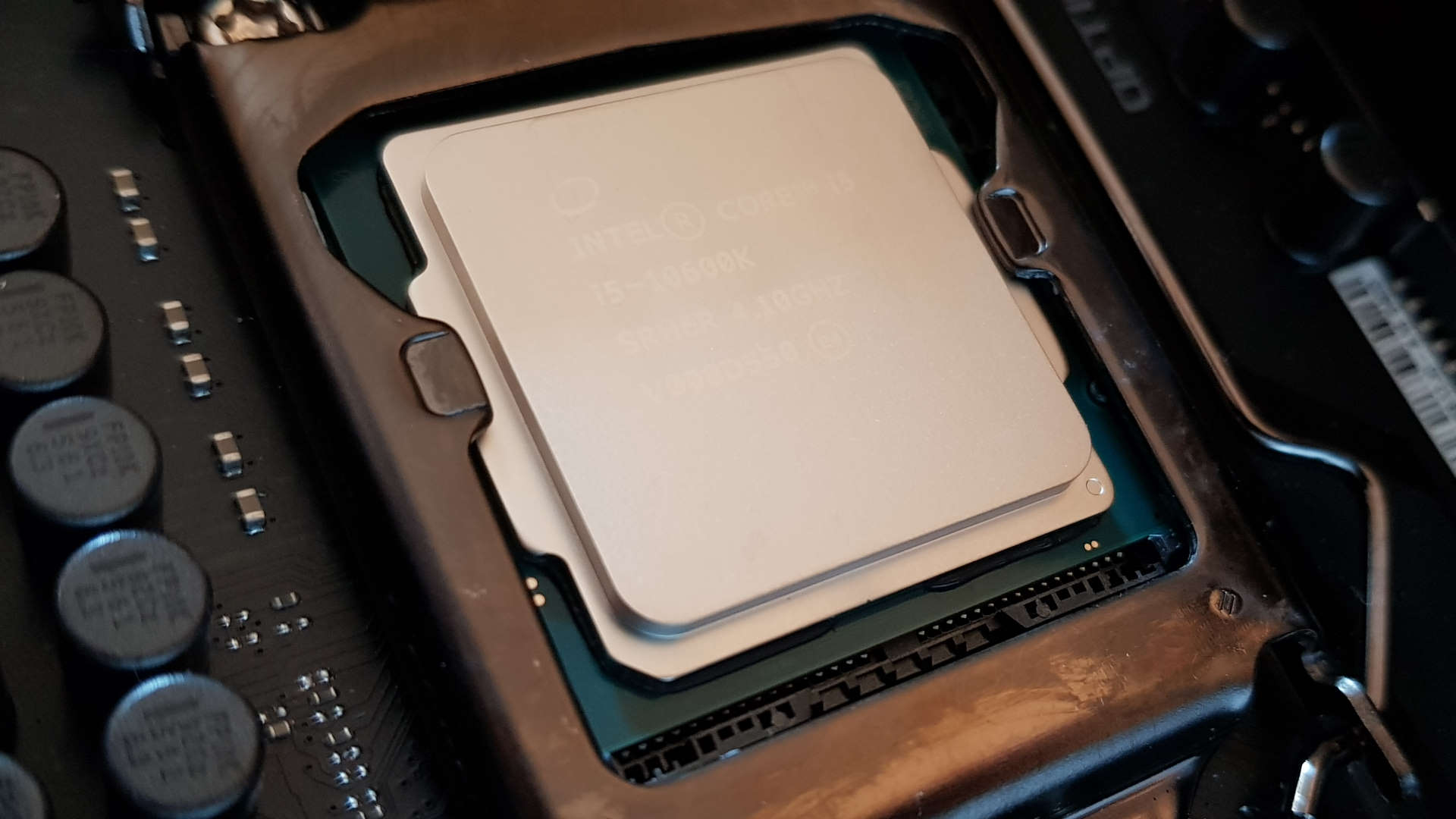
Intel Core i5 10600K performance
There's no getting away from it; if you want the absolute best gaming performance then you need to get yourself an Intel processor. The benchmark results all bear that out, and the Intel Core i5 10600K is right up there with the best of them. Considering it's considerably cheaper than the $500+ Core i9 the fact that it's keeping pace in gaming terms is impressive. For the majority of us gamers there would simply be no performance to be gained from stepping up to either an i7 or i9 now.
There are even times that the 10600K actually beats the outgoing 'fastest gaming CPU', the Core i9 9900K. That's a hell of an achievement for an i5 processor, and shows what a stellar gaming chip this K-series CPU is.
In the face of the AMD Ryzen competition, well, it's no competition. The similarly specced Ryzen 5 3600X is behind in every game benchmark, and so is the similarly priced, eight-core Ryzen 7 3700X. Proving once more that, after a point, core-count is irrelevant in PC games, the 12-core, 24-thread Ryzen 9 3900X trails the 10600K.
Gaming benchmarks
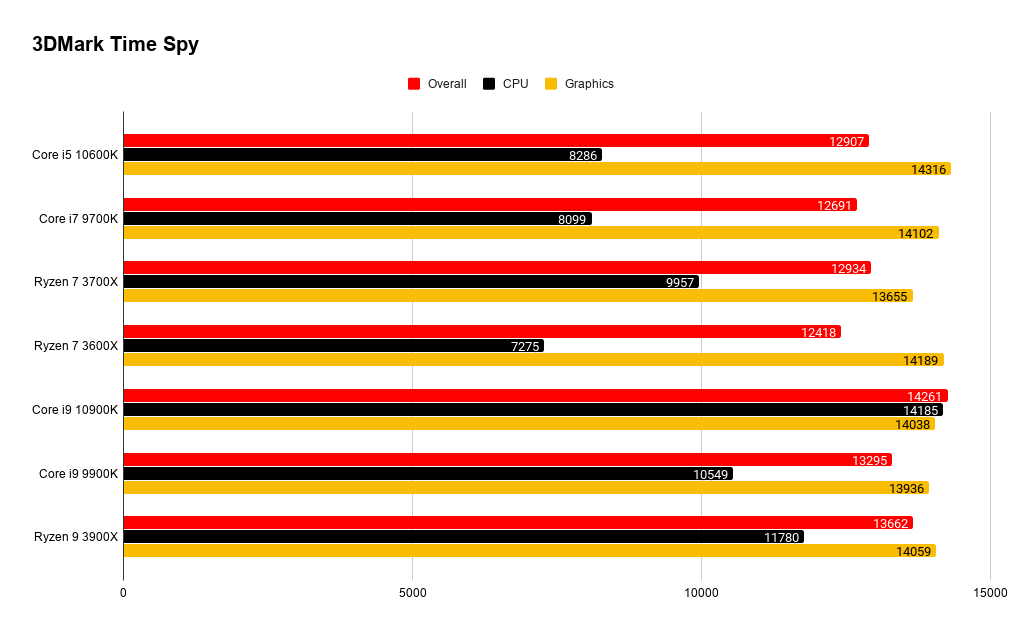
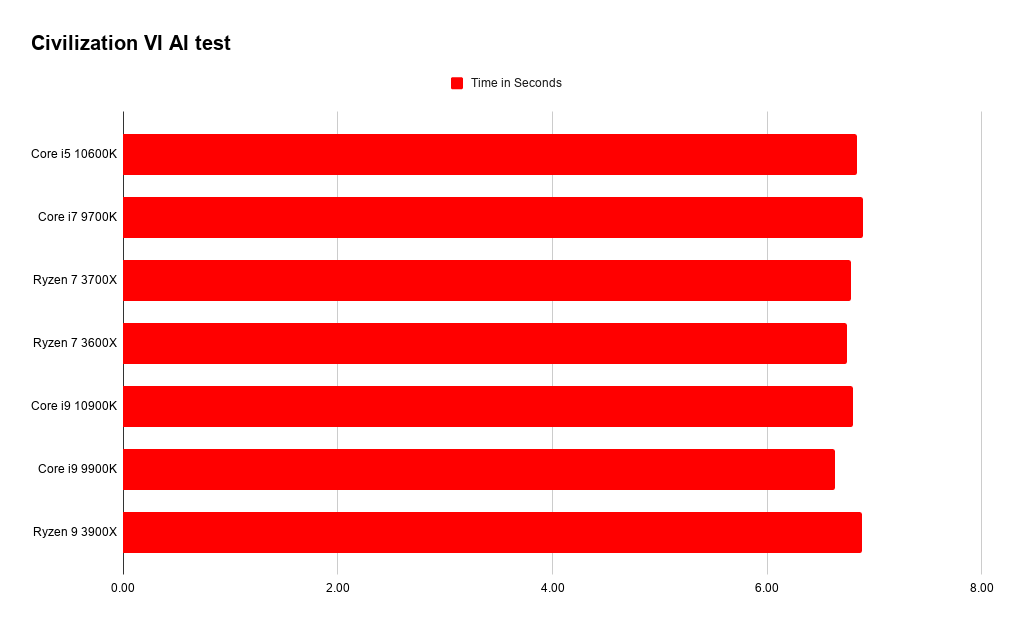
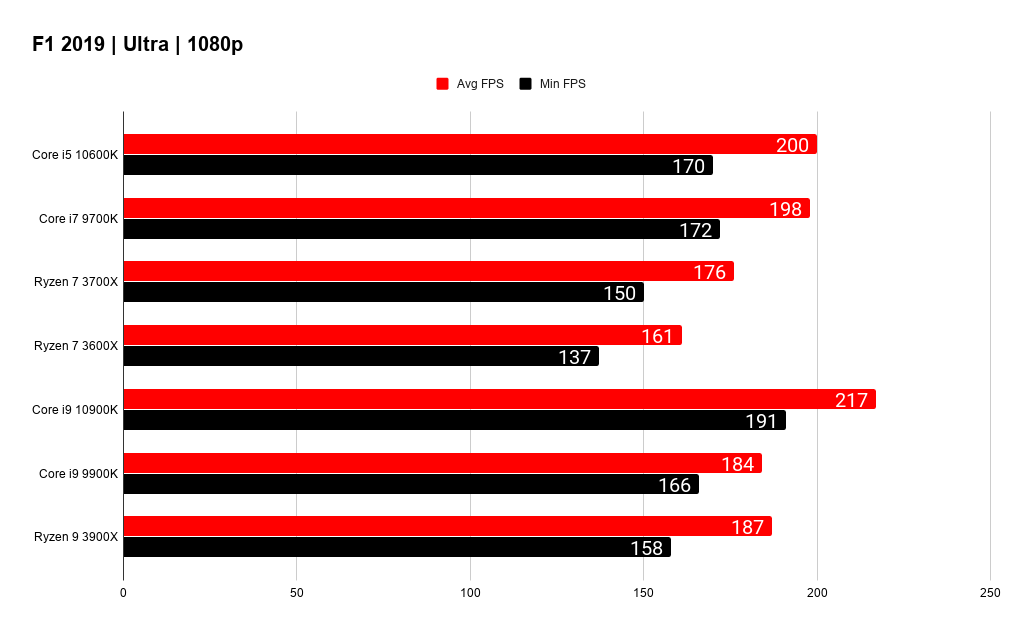
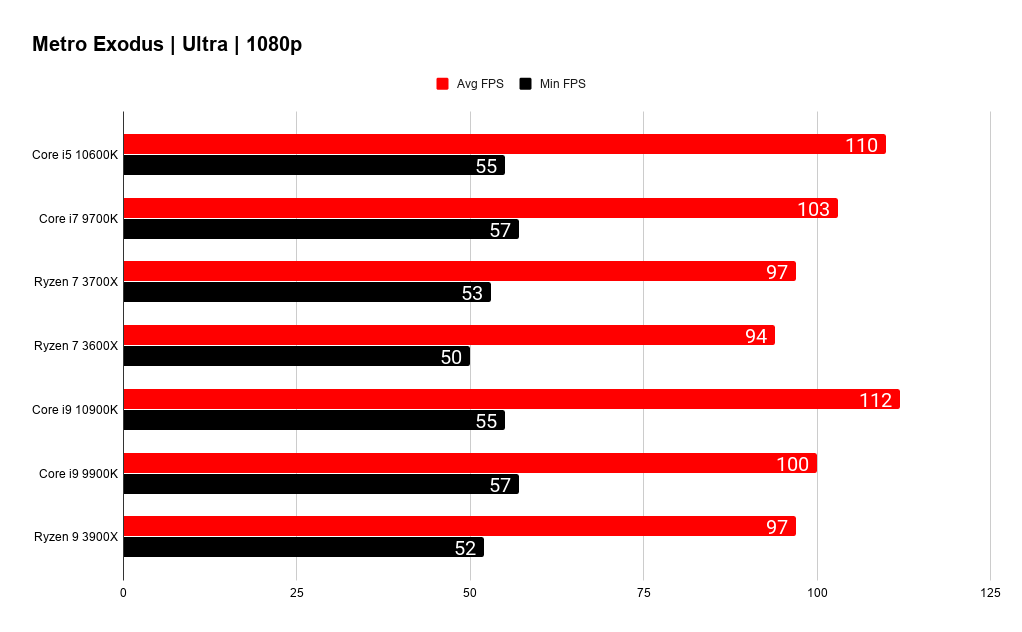



Job done, then. It's a worldie gaming CPU that can outstrip anything AMD can put in its way, and stand up to its Comet Lake brethren too. But that's not the whole picture. The performance gap is there across the board between Intel and AMD, but at the risk of labouring a point we've made elsewhere many times, that frame rate delta almost entirely vanishes once you step above the 1080p level we bench CPUs at in order to highlight any potential performance differences.
At 1440p and 4K there is almost nothing between any of the modern CPUs we've tested here - all those gaming frame rates are GPU bound at this level and any of these chips are capable of giving their all to your graphics card. There is still a performance difference for sure, but it becomes a matter of a few frames per second here and there at the highest settings.
CPU benchmarks
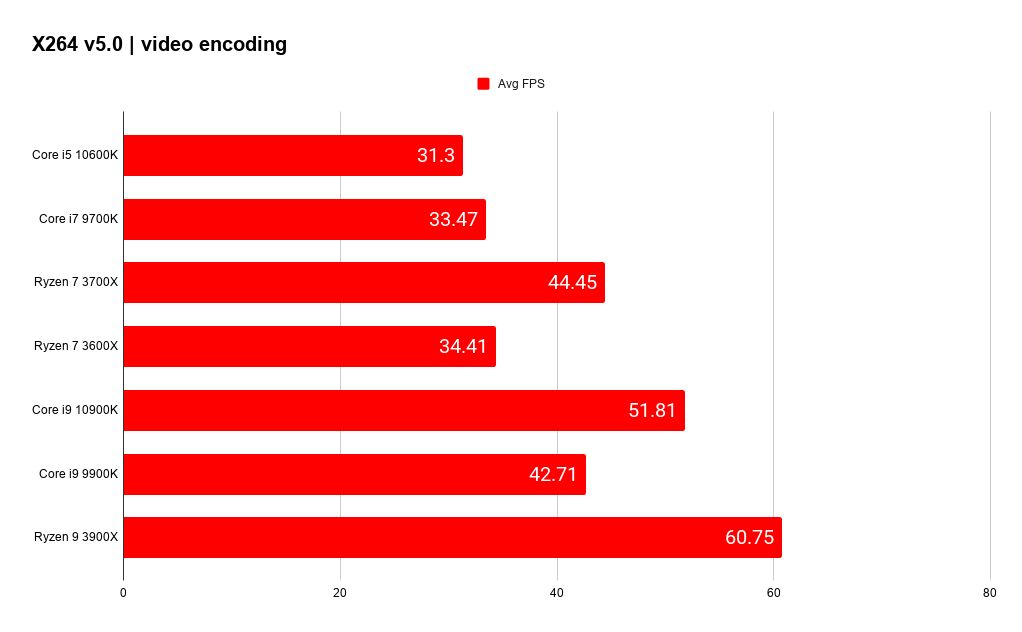
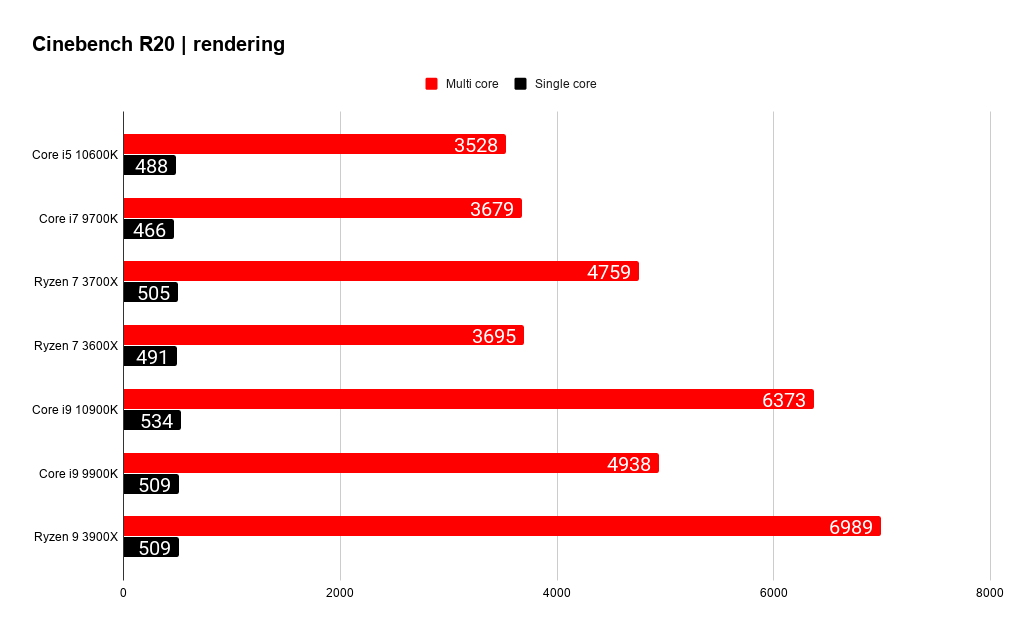
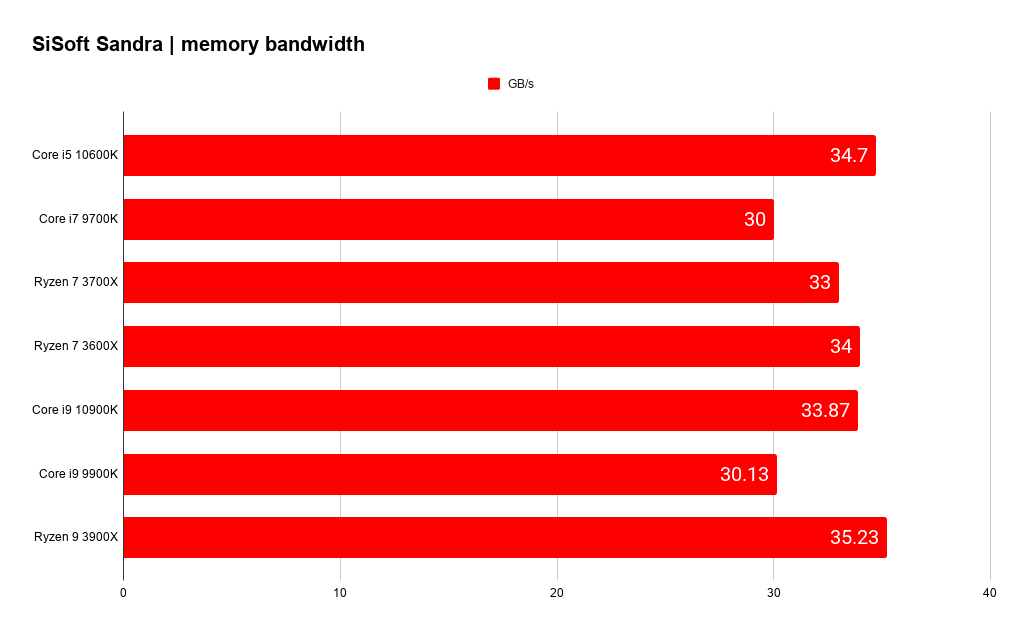
CPU - Intel Core i5 10600K
Cooler - NZXT Kraken Z63
Motherboard - Asus ROG Maximus XII Extreme
Memory - 32GB Corsair Vengeance RGB Pro @3,200MHz
GPU - Nvidia RTX 2080 Ti
Storage - 1TB Addlink S90
PSU - NZXT C850
Outside of gaming it's obviously a different story. For anything that thrives on multi-threading, such as rendering and encoding, the Core i5 10600K is bottom of this pile. Even when you compare the 12 threads of the 10600K against the previous generation, pure eight-core i7 9700K it loses out. The smart Zen 2 chiplet design of the Ryzen 5 3600X, with the same core and thread-count, also has the beating of the Comet Lake i5 at stock clocks when it comes to actual proper, thread-heavy CPU workloads.
There's still a place for Ryzen in the mid-range after all.
But what about overclocking? This is somewhere the 10600K excels. Though, that obviously has to be qualified in that we are in the last days of the 14nm architecture and I don't believe there's anything more Intel can squeeze out of matching it and the Skylake architecture. We're not getting the ~1GHz overclocks which used to be standard K-series fodder.
Still, the fact that this sub-$300 CPU is able to run all six cores and 12 threads at 5GHz solidly, and do it while remaining pretty chilled too, is impressive. At stock clocks, admittedly under the impressive NZXT Kraken Z63 cooler, the 10600K peaks at 51°C, but even with the whole thing running at a solid 5GHz under load I didn't see my sample go above 63°C.
And, unlike with the 10900K, overclocking the 10600K actually made sense from a gaming perspective. It does offer higher frame rates and better general CPU productivity performance than equivalent AMD chips too. At that temperature, and even with the higher power draw, I think you could happily run the Comet Lake Core i5 overclocked as standard all day long without worrying about it.
I most certainly wouldn't be happy leaving the Core i9 at 5.3GHz on all cores. That way lies flame-y, melty, fire-y things.

Intel Core i5 10600K verdict
Since the third generation of AMD Ryzen 5 processors landed on the scene I've not been able to muster up much enthusiasm for successive Intel Core i5 CPUs. Which is a shame; historically they've been my go-to recommendation for PC gaming on a sensible budget. With the greater value proposition and very competitive frame rate performance of the Ryzen 3000-series CPUs, however, it's been impossible to see past the latest mid-range AMD silicon.
But this is where Intel's 10th Gen Core—AKA Comet Lake—really comes into its own. Forget the headline grabbing, 'holy crap, we need to up the core count on our chips, guys. Let's jam in 10-cores and just jack up the power,' Core i9 10900K. This is where the Comet Lake release works, and where it starts to make sense for us to start looking at Intel processors for our gaming PCs again.
It's just frustrating that it's taken what is arguably a marketing decision to make that happen. Leaving HyperThreading turned on isn't a particularly spectacular technical feat when it comes to the Core i5 and i3 Comet Lake chips, but it's the one change that's really going to make these 10th Gen processors worthwhile.
I will still continue to bang the drum for the brilliant Ryzen 5 3600—at its current $167 price it's practically half the price of this newer i5, isn't far off in terms of gaming performance, and as a platform, pairing it with the budget B550 chipset will make for a stunning machine.
Above that the AMD 3600X is still some $50 cheaper than the 10600K, while the eight-core, 16-thread 3700X is about the same price as the Core i5 should be, maybe a little less given the launch-time pricing of Intel's new CPUs.
But for a dedicated gaming machine the 10600K is still a great processor, offering higher performance than any of the Ryzen CPUs. I foresee a great many pre-built gaming PCs coming with overclocked 10600K chips in them over the next six months. And it's going to be up to AMD and its Ryzen 4000 CPUs to put a stop to that, and to do so we need to see Zen 3 offering the IPC boost we've been promised by all the rumour-mongering.
But with the combination of its overclocking prowess and the extra boost of HyperThreading, the Core i5 silicon is now a fantastic option for pure gamers and now for those doing anything a little more processor-intensive on the side too.
Intel's mid-range Comet Lake chips swing the game back in its favour. With serious gaming performance, overclocking chops, and finally some multi-threaded juice, the Core i5 10600K is a great CPU.

Dave has been gaming since the days of Zaxxon and Lady Bug on the Colecovision, and code books for the Commodore Vic 20 (Death Race 2000!). He built his first gaming PC at the tender age of 16, and finally finished bug-fixing the Cyrix-based system around a year later. When he dropped it out of the window. He first started writing for Official PlayStation Magazine and Xbox World many decades ago, then moved onto PC Format full-time, then PC Gamer, TechRadar, and T3 among others. Now he's back, writing about the nightmarish graphics card market, CPUs with more cores than sense, gaming laptops hotter than the sun, and SSDs more capacious than a Cybertruck.


